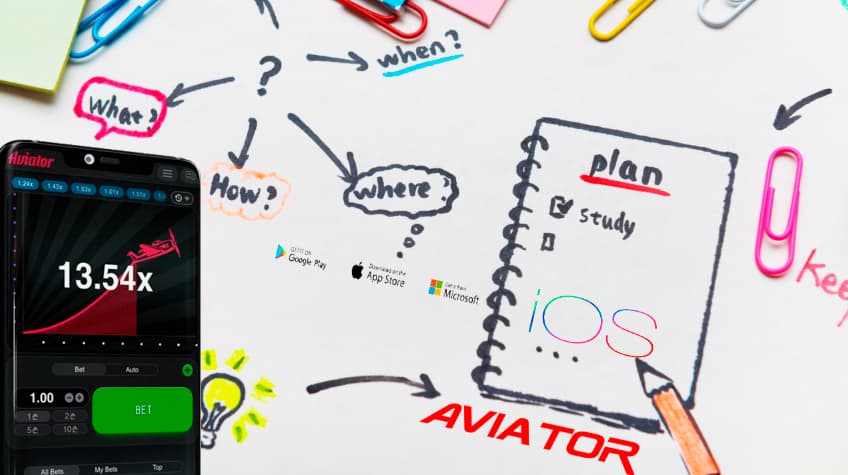Phone usage in 2023 was dominated by mobile games, which led to approximately 95 billion copies of these applications being downloaded. This is not only indicative of the impact of the pandemic and escapism but also shows that developers have an amazing opportunity to create enjoyable and financially rewarding games. It is an example of this trend where the Aviator game from Spribe has gained popularity for its simplicity, speed, and proven fairness. Therefore, here are some essential steps on Aviator-game.in on how you can create a fascinating mobile game with such amazing numbers.
Conceptualizing Your Game Idea
A solid game idea is the foundation of any successful mobile game.
Generating a Game Idea:
Generating a game idea can be approached in two ways. The first method is to develop a unique story and prototype, then test it with potential players to gauge interest. The second method involves analyzing popular games, such as Aviator, and building upon their mechanics and tropes to create something fresh and appealing. Both approaches require testing and refinement based on player feedback to ensure the idea resonates with the target audience.
Developing the Core Game Loop and Mechanics:
Define your game’s core loop, which is the central sequence of actions players repeat to progress. Examples include joining a fight, finding enemies, defeating them, and winning the match in games like Counter-Strike. Build additional mechanics that enhance this core loop, ensuring they support player immersion and satisfaction. Test these loops with potential players and iterate based on their feedback.
Establishing Game Features and User Stories:
Prioritize features and mechanics that enhance the core gameplay and drive the story forward. Use user stories to describe different player characters and their desired actions, which guide the development of game mechanics. Create acceptance criteria to define when each feature is complete.
Designing Player Experience and Game World
A well-designed player experience and an immersive game world are crucial for engaging players. This section outlines how to create a compelling narrative and interactive environment.
Plan the Game’s Mechanics, Setting, Technology, and Interactions:
Plan the game’s mechanics, setting, technology, and interactions to create a cohesive experience. Choose mechanics that support the story and core loop, such as the dice roll system in Disco Elysium. Select a setting that enhances the narrative, whether it’s a dystopia or a solarpunk future. Optimize controls for mobile devices and consider using AR or VR elements to enrich the gameplay. Decide on the game mode, such as single-player or multiplayer, based on what best supports your story.
Selecting a Mobile Platform:
Consider factors such as which platform has the most users, how you can make money from apps and what people using each operating system prefer before choosing whether to develop for Android, iOS or both. Android possess approximately 71% of the market share with a low initial developer fee compared to iOS however, iOS users spend money on applications at a higher rate than Android. Think about developing for multiple platforms so that your game reaches more players.
Choosing the Right Game Engine
For efficient development and great outcomes, it is vital to select the right game engine. The description below highlights some popular game engines and their suitability for various types of projects.
Choosing a Game Engine:
Select a game engine that suits your project. Unity and Unreal Engine are good options for both 2D and 3D games, while GameMaker Studio 2 is suitable for making simple 2D games; Construct 3 and BuildBox require little coding. You must also look at how technically capable each engine is to ensure this is sufficient to support your game’s technical requirements.
Implementing a Monetization Strategy
Create a plan for incentivizing players while making money. Some of these are one-time purchases, in-app purchases, freemium models, and advertising. However, these would not interrupt the game.
Budgeting and Choosing a Development Partner:
Game development costs can be very diverse, starting from $40k to $200k depending on how much sophistication is required. Thereafter, consider their former works, then contact their clients as well as examine them if they are capable and enthusiastic about your project.
Finalizing and Releasing Your Game:
The finishing touches involve polishing your game till it meets platform requirements and planning an effective launch.
Testing and Quality Assurance:
Thorough testing should be performed to ensure the high quality of the app in line with requirements from app stores. Publish the game in stores, gather feedback from users, and make necessary updates. Plan marketing strategies to promote your game and attract players.
By following these steps, you can develop an Aviator mobile game that is captivating to players by standing out among many similar games on the market.

Comments are closed